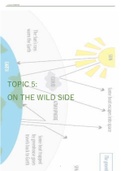Resumen
Summary Study/ revision notes – Topic 5: On the wild side (Biology A-Level Edexcel A Salters-Nuffield)
- Grado
- Biology A-Level
- Institución
- Bachillerato
This document compiles study notes on Topic 5 (On the wild side) of the Biology A-Level (Salters-Nuffield) course.
[Mostrar más]



